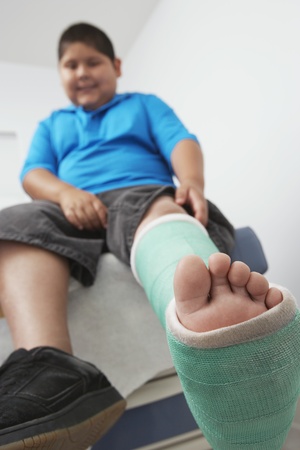1. Introduction: The Importance of Cardiac Rehabilitation in Rural America
Heart disease remains a leading cause of illness and death across the United States, but people living in rural communities face even bigger challenges when it comes to heart health. Compared to those in cities and suburbs, rural Americans often have higher rates of heart attacks and other cardiovascular problems. Access to medical care can be limited, making it harder for people to get the help they need after a cardiac event. This is why cardiac rehabilitation—especially programs that use exercise therapy—plays such a critical role in improving patient outcomes for rural residents.
Unique Cardiovascular Health Challenges in Rural Communities
Several factors make cardiovascular health more difficult to manage in rural areas. These include longer travel distances to healthcare facilities, fewer specialized healthcare providers, and less access to health education resources. Additionally, lifestyle factors such as higher rates of smoking and obesity are more common in some rural regions. The table below highlights some key differences between rural and urban populations related to heart health:
| Rural America | Urban America | |
|---|---|---|
| Access to Cardiac Care | Limited (long travel distances, fewer specialists) | Greater (more hospitals and clinics nearby) |
| Heart Disease Rates | Higher | Lower |
| Lifestyle Risk Factors (smoking, obesity) | More common | Less common |
| Cardiac Rehab Participation | Lower participation rates | Higher participation rates |
The Role of Cardiac Rehabilitation
Cardiac rehabilitation is a medically supervised program designed to help people recover after a heart attack, surgery, or other heart problems. It usually includes exercise therapy, education about healthy living, and counseling to reduce stress. For those living in rural areas, joining a cardiac rehab program can be life-changing by helping patients regain strength, lower their risk of future heart issues, and improve their overall quality of life.
The Need for Exercise Therapy in Rural Cardiac Rehab Programs
Exercise therapy is a key part of cardiac rehab. It helps strengthen the heart and body after an event like a heart attack. Because rural patients may have fewer options for gyms or supervised exercise programs close to home, finding ways to make exercise therapy accessible is essential. Community centers, home-based rehab programs, or telehealth options can all help bridge this gap for rural Americans.
2. Barriers to Access: Understanding Rural Healthcare Realities
Logistical Challenges in Rural Cardiac Rehab
For many people living in rural America, getting access to cardiac rehabilitation isn’t just about wanting to get better—it’s about overcoming real-world obstacles. One of the biggest problems is the simple issue of distance. In many small towns and remote areas, cardiac rehab centers can be hours away. This makes it tough for patients, especially if they need to attend multiple sessions every week.
Main Logistical Barriers
| Barrier | Description |
|---|---|
| Provider Shortages | There are fewer hospitals and rehab specialists in rural communities, so appointments may be limited or unavailable. |
| Transportation Issues | Lack of public transportation and long travel distances make attending regular sessions challenging. |
| Poor Infrastructure | Some rural roads are not well maintained, which can make travel unsafe or unreliable, especially in bad weather. |
Socioeconomic Hurdles
Economic challenges add another layer of difficulty for rural Americans needing cardiac rehab. Many rural residents have lower incomes and higher rates of being uninsured or underinsured compared to those in cities. Even with insurance, high deductibles and copays can make ongoing treatment unaffordable.
Common Socioeconomic Barriers
- Limited Financial Resources: The cost of repeated visits adds up quickly, especially when factoring in gas money or time off work.
- Lack of Health Insurance: Some patients simply do not have coverage that includes cardiac rehab services.
- Work Obligations: Many rural jobs don’t offer paid time off, making it hard for patients to take time away for medical appointments.
Cultural Considerations in Rural Communities
Cultural beliefs and attitudes can also impact whether someone seeks out cardiac rehab. In some rural areas, there’s a strong sense of self-reliance and privacy. People may feel uncomfortable sharing personal health information or relying on outside help. Additionally, there may be less awareness about what cardiac rehab is and why it’s important after a heart event.
Key Cultural Barriers
- Mistrust of Medical Systems: Some rural residents may distrust healthcare providers, especially if they’re not from the local area.
- Lack of Awareness: Not everyone knows that cardiac rehab exists or how much it can help with recovery and long-term health.
- Pride in Independence: Asking for help might be seen as a weakness, so some people avoid seeking care even when they need it.
Together, these barriers create real challenges for rural Americans who need cardiac rehabilitation. Addressing them requires understanding the unique realities faced by these communities—and finding creative solutions that fit their needs.
![]()
3. Role of Exercise Therapy in Cardiac Rehabilitation
Understanding Exercise Therapy in Cardiac Rehab
Exercise therapy is a key part of cardiac rehabilitation, especially for people living in rural America where heart disease rates can be higher and access to healthcare may be limited. Exercise therapy involves planned, supervised physical activities designed to help heart patients recover and improve their health after a heart event like a heart attack or surgery.
Core Components of Exercise Therapy
| Component | Description |
|---|---|
| Aerobic Exercise | Activities like walking, cycling, or swimming that increase heart rate and help improve cardiovascular fitness. |
| Strength Training | Light weights or resistance bands to build muscle strength and endurance, supporting daily activities. |
| Flexibility Exercises | Stretching routines to maintain joint mobility and prevent injury. |
| Education & Monitoring | Teaching safe exercise habits and regularly checking blood pressure, heart rate, and symptoms during activity. |
Benefits for Cardiac Patients
- Improved Heart Health: Regular exercise helps the heart pump more efficiently and lowers blood pressure and cholesterol levels.
- Reduced Risk of Future Heart Problems: Staying active cuts the chances of having another heart attack or needing hospital care.
- Mental Wellbeing: Exercise reduces stress, anxiety, and depression—common issues after a cardiac event.
- Better Quality of Life: Patients often feel stronger, have more energy, and can get back to enjoying daily life and hobbies.
Evidence Supporting Effectiveness
Many studies in the U.S. show that exercise therapy as part of cardiac rehab lowers death rates and hospital readmissions. The American Heart Association recommends it as a standard part of recovery because patients who participate in exercise-based rehab live longer and enjoy better health than those who don’t. In rural communities, even simple walking programs or home-based exercises can make a big difference when access to gyms or clinics is limited.
4. Innovative Strategies to Enhance Participation
Cardiac rehabilitation (CR) is a vital step for heart health, but people living in rural America often face unique challenges that make joining these programs tough. Luckily, creative and culturally relevant strategies are helping more folks get the support they need, no matter where they live. Lets explore some of these innovative solutions making CR more accessible and effective in rural communities.
Telehealth: Bringing Cardiac Rehab to Your Living Room
Telehealth uses video calls and digital tools so patients can join exercise therapy sessions, talk to specialists, and track their progress—all from home. This approach is especially helpful for those who live far from the nearest hospital or clinic.
| Benefits of Telehealth | How It Helps Rural Patients |
|---|---|
| No need to travel long distances | Saves time and money on transportation |
| Flexible scheduling | Fits around farm work or family commitments |
| Real-time feedback from professionals | Ensures safe and effective exercise routines |
| Cultural sensitivity | Programs can be personalized to local lifestyles and traditions |
Mobile Rehab Units: Care That Comes to You
Mobile rehab units are vans or small buses equipped with medical devices, exercise equipment, and staffed by trained therapists. These units travel directly to rural towns, providing on-site cardiac rehab services at community centers, churches, or even parking lots.
- Convenience: No need for patients to drive hours for care.
- Community-based: Builds trust by meeting people where they feel comfortable.
- Education: Offers group classes and individual counseling close to home.
Community-Based Exercise Programs: Local Support for Better Health
Small towns often have strong community ties. By partnering with local gyms, YMCAs, senior centers, or faith groups, healthcare teams can create group exercise programs designed specifically for heart health. These programs make rehab social, fun, and supportive.
Examples of Community-Based Programs:
- “Walking Clubs” organized by local churches or schools
- Aerobics classes led by certified trainers at the town hall or park pavilion
- Family fitness days, encouraging relatives to join in healthy activities together
- Bilingual sessions to reach diverse communities within rural areas
The Power of Local Partnerships:
Working together with local leaders ensures that programs respect cultural values and daily routines—whether its adjusting schedules during harvest season or incorporating music and traditions unique to the area. This sense of belonging boosts participation and long-term success.
5. Empowering Patients and Communities for Long-Term Success
The Power of Patient Education
In rural America, many people living with heart conditions may not know the full benefits of cardiac rehabilitation (CR) or how to continue healthy habits at home. Patient education is crucial for building confidence and understanding about exercise therapy, medication management, and lifestyle changes. Simple educational materials—like pamphlets, videos, or one-on-one sessions—help patients know what to expect from CR and why sticking with the program matters. When patients understand their own health and treatment plan, they are more likely to stay engaged and motivated.
The Role of Local Healthcare Providers
Local healthcare providers—such as family doctors, nurses, and physical therapists—are trusted members of rural communities. They play a key role in encouraging participation in cardiac rehab. Providers can personalize exercise plans, check in regularly with patients, and answer questions in a familiar setting. This ongoing support helps patients overcome fears or barriers that might otherwise keep them from completing their rehab program.
How Providers Support Patients
| Healthcare Provider Role | Examples of Support |
|---|---|
| Family Doctor | Explains CR benefits during checkups, refers patients to local programs |
| Nurse | Monitors patient progress, offers encouragement, helps set goals |
| Physical Therapist | Teaches safe exercises, adjusts routines for individual needs |
The Importance of Community Support Systems
Community support systems are essential for helping rural residents stay committed to cardiac rehab. These systems include family members, friends, faith groups, and local organizations like churches or senior centers. When patients have a network cheering them on—reminding them to attend sessions or join group walks—they feel less isolated and more motivated.
Ways Communities Can Help
- Transportation Assistance: Volunteers or local groups can help arrange rides to rehab centers.
- Group Exercise: Community walking clubs or exercise classes make it easier (and more fun) to stay active.
- Peer Support: Sharing stories and tips with others going through similar experiences builds confidence and hope.
- Health Fairs & Workshops: Local events raise awareness about heart health and available resources.
Together Towards Better Quality of Life
When education, healthcare providers, and community support come together, rural Americans can break down barriers to cardiac rehabilitation. By working as a team, patients gain the knowledge, motivation, and practical help they need for lasting heart health and a better quality of life.

